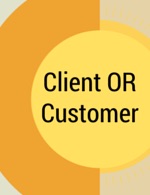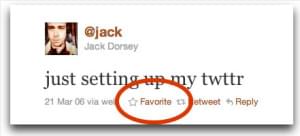
“No. This just doesn’t look right”.
What do you do when a client says that? Especially if it’s about the design you just sent in after a whole week of loving labour.
For a designer, the worst clients are the ones who don’t know what they want. These are the ones who don’t give clear instructions, ask for multiple revisions and insist they’ll “know it’s right when they see it“.
As designers, we’re responsible for delivering not just the visuals as a pdf, psd, or .svg but also for delivering the intangible associations with those visuals.
It can get icky when working with clients who lack clarity. It is part of our job, to help clients achieve that clarity.
Part of our job is to help clients achieve clarity about their brand identity.
You don’t want to be caught in multiple cycles of design iterations, hoping the client likes your work. Or experimenting with different shades of blue.
To avoid the heartburn later – front load the work. Ask prospective clients direct and detailed questions before finalizing the project. This will give you a glimpse into how clear they are about their business, their prospects and their brand identity. Using this you can judge how much hand holding will be required and make that crucial decision: are you willing to put in the time and effort?
Along with mapping out a clear brand identity, you can frame the questions to leverage a few indirect benefits like:
- Inspire confidence and trust in the client: You’re a thorough professional and are making a genuine effort to understand their business and needs. If the business owner has not yet given much thought to these questions, they’ll appreciate the guidance and clarity it brings. This also softens them up a bit to be open to the rates you quote in your proposal.
- Save time and effort: You can weed out clients are not worth your time to consider writing out a proposal for. And for clients that do come on board, it helps avoid unnecessary revisions and disputes during the project.
- Deliver better, grow more: You can tune in better to your clients and craft a brand identity that best matches the client needs. Happy clients are more likely to give you glowing testimonials and more referral work.
To make it easier for you, we’ve summarized the most essential questions designers should ask potential clients, before embarking on the actual design, or even before signing up for the project at all.
About the Business
Design is a very subjective process. You will need to work closely with your client, to understand their business and the direction they want to take it.
1. What does your business / product do? Remember this is not their corporate ‘About’ page. Instead, this should be on the lines of their elevator pitch. If they had just 30 seconds to explain their product to a customer, what would they say?
2. What problem do you solve for your customers? What is the purpose of their existence (other than to make money)? If a business is not solving a problem or fulfilling a need for customers, then it’s not worth while.
3. Who are your 3 main competitors (direct or indirect)? What do you like about their presence? What do you dislike about their brand identity? It pays to know who you’re competing against and what the industry norms are. Know them, learn from them, but don’t ape them. Do your own thing.
4. What about your background or product or service sets you apart from your competitors? Why should your prospects buy from you or engage with you? Consumers today are spoilt for choice. If your clients can’t describe in a sentence or two what their USP is, steer them over to this explanation over at Kissmetrics and help them define theirs.
5. Is there a unique story behind your business or business name or logo? People connect through stories. Storytelling is an effective way to create and sell a brand image. Find out what are the stories behind the business, the products, and the customers. The story creates the customer. Here’s how to tell a great brand story.
In the following video, which can optionally serve as the intro video to our Sketch course, Elio Qoshi teaches you the vital thumb rules you need to design a smashing logo. You can browse the full course, Improve your Sketch Productivity with These Tips and Tricks, here.
6. Share 5 adjective or words that best describe your company. I love the simplicity of this. The words they choose convey a lot of meaning regarding how they see themselves, or how they want to see themselves.
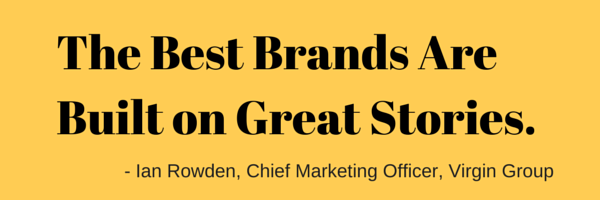
About the Project
The next part relates to the project at hand. Get into the details of what they really need, and why. This helps set clear expectations from the beginning and avoids scope creep or heated exchanges later.
7. What are the Deliverables for the brand identity? It’s better to clearly document what your deliverables will be. Brand identity is vast and can include stationery, logo, website, product packaging, marketing collateral and others.
8. Does any of your current material need to be updated to match the new brand identity? These are often overlooked during the initial phases. To avoid last minute scope creep, make sure to ask the client to clearly spell out any and all existing material that will have to be updated.
9. Who are the decision makers on this project? What is the turnaround time for making a decision? After an exhaustive questionnaire and detailed proposal you don’t want to find you were talking to the assistant to the assistant of the guy who has to make the decision, and will have to repeat the whole process all over again!
10. What timelines are you’re looking at for this project? What is your budget? Given your other commitments and the scope of this project, will you be able to deliver the project within the required time frame? If their budget is way too low, or the timeline too short, you can politely decline upfront and not spend the time and effort to create a proposal.
About Their Customers
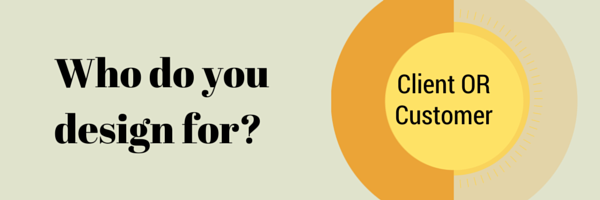
Who should you really design for? Your client or their customer?
While your client is the one who has to approve your design and pay for it, their revenues in turn come from their customers. Designers often end up trying to impress and please their clients – tuning the design to suit their color preferences, tastes etc. However, the client is not the one the design has to influence and sway. Your design must woo the end customer.
11. Describe your ideal customer? Selling to another business is different from selling to a consumer. The brand identity should take that into account.If they already have an Ideal Customer Profile, you can ask them to share that. If not, ask for demographic details along with a psychological profile or story. Here’s an exercise from Bidsketch that you can guide them through to create their ICP.
12. What is the primary message do want to convey to your customers? This does not have to be just a verbal message. This is about how they want customers to feel each time they interact with the business. How do people feel each time you mention an iPhone?
13. Share 5 adjective or words that best describe your ideal customer. Do they know their customers well enough to be able to describe them in a few short words? If not, you’re going to have to do some hand holding to help them know their customers better.
14. Do you have any market research about your ideal client or your product/business that you can share with us? Market research is often sensitive. Offering to sign a non-disclosure agreement before they share any such information will help convey that you’re serious about this and can be trusted.
About the Identity
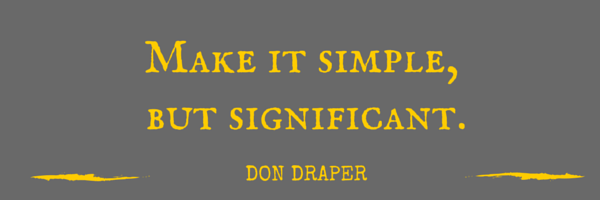
The questions above form the basis of the section. Only once you’ve understood your clients and their customers, does it make sense to even start talking about the brand identity.
15. What is the purpose behind this exercise? Why now? No one wakes up and says ‘Oh, I have to create a new brand identity for the business today’. It comes after considerable thought and effort. Ask what your client wants to achieve from this exercise, and what their end goals are.
16. If you have an existing brand/identity, why isn’t it working for you? This will help you understand what’s not working, what are their pain points, and what you need to fix/improve in your new design. Here are some common branding mistakes you need to avoid.
17. Do you have specific guidelines do’s and don’ts about the colors and other elements of brand identity? If you need to stick to some predefined corporate guidelines for the brand identity, it’s better to know it upfront rather than after you’ve spent hours working out the color combinations for your new design.
18. Please share 3 links of brand whose brand identity inspires you. What do you like best about them. This can get tricky. Clients are often unable to verbalize why a certain brand or logo appeals to them. For example, take the journey of the SitePoint logo. The simplicity of the design was the result of a lot of hard work and collaboration. Not all clients will be able to understand and verbalize the nuances. You may have to help them through this.
19. Please share 3 brands/logos that you thought were weak, and what made you feel that way. Again, this is going to be a subjective thing. If you need some examples to show them, head over here.
20. Using 5 adjectives or short phrases, describe your brand’s desired look and feel. Words carry much power. When clients describe what they want, scratch beyond the surface to see what they really mean. What are the hidden desires and feelings that they want to invoke in their customers.
Summary
This may seem like a long list of questions, but you’ll save yourself alot of time and effort by getting clients to answer these upfront. It’ll help you weed out clients that are not a good fit. Those who’re looking for a quick, cheap job, will not bother to fill it out. Those who give short, sketchy answers are still testing the waters and unsure of who they are and what they stand for. You will have to hand hold them and help them first map out a business identity and strategy. The ones who’ve done their homework, know what they want, who their customers are and what their customer’s core desires and feelings are, will be able to fill out the questionnaire with ease. Working with a client that has clarity about their business and goals makes your task that much easier.
What’s your process before signing up a project? Do you use a similar questionnaire to qualify clients and projects?
Download the Brand Identity Questionnaire
Obviously it’s important to have these questions ready from the first client meeting. We’ve made things easier for you by putting the questions into a printable, reusable PDF.
Download the Brand Identity Questionnaire (PDF).
Frequently Asked Questions on Creating a Brand Identity
What is the importance of a brand identity?
A brand identity is crucial as it represents how a business wants to be perceived in the market and to its customers. It includes visual elements like the logo, color palette, and typography, which create a distinct image in the customer’s mind. A strong brand identity can build customer loyalty, differentiate you from competitors, and drive business growth.
How can I create a unique brand identity?
Creating a unique brand identity involves understanding your business’s core values, target audience, and unique selling proposition. It’s about creating a brand personality that resonates with your audience and stands out from the competition. This involves careful selection of your brand’s visual elements, tone of voice, and messaging.
What questions should I ask when developing my brand identity?
When developing your brand identity, consider questions like: What is the mission of my business? Who is my target audience? What are my brand values? What makes my business unique? How do I want my audience to perceive my brand? These questions can guide your brand identity development process.
How does a brand identity impact customer perception?
A brand identity directly influences how customers perceive your business. It can create a sense of trust and loyalty, making customers more likely to choose your products or services over competitors. A strong brand identity can also communicate your business values and personality, helping to attract your target audience.
How often should I update my brand identity?
There’s no set rule for how often you should update your brand identity. However, it’s important to keep it relevant and aligned with your business goals and customer expectations. Regular reviews can help identify if your brand identity needs refreshing or a complete overhaul.
What are the key elements of a brand identity?
Key elements of a brand identity include the logo, color palette, typography, imagery, and tone of voice. These elements work together to create a consistent and recognizable image of your brand across all marketing channels.
How can I ensure consistency in my brand identity?
To ensure consistency, create a brand style guide that outlines how your brand elements should be used across different platforms. This includes specific guidelines for your logo, colors, typography, imagery, and tone of voice.
How does a brand identity differ from a brand image?
While brand identity is how a business wants to be perceived, brand image is how it is actually perceived by its customers. A strong brand identity can help shape a positive brand image.
Can a strong brand identity improve my business performance?
Yes, a strong brand identity can drive business performance by increasing recognition, building customer loyalty, and ultimately leading to increased sales. It can also give you a competitive edge in the market.
How can I measure the effectiveness of my brand identity?
You can measure the effectiveness of your brand identity through customer feedback, brand awareness surveys, and tracking key performance indicators like sales, customer retention, and market share.
 Richa Jain
Richa JainOnce upon a time, Richa was a savvy techie & manager, in the semiconductor software industry. After her miraculous escape and recovery, she now works from her garden, creating websites, writing about technology, business & entrepreneurship; and helping others escape the cubicle lifestyle.
